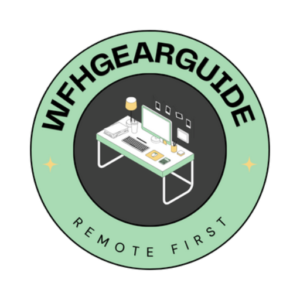In a significant turn of events, the City of Philadelphia and the Governor of Nebraska have both issued mandates for the return of remote workers to office spaces, marking a pivotal moment in the post-pandemic workplace landscape. This decision comes amidst ongoing debates about the efficacy and future of remote work, which many studies have shown to be just as, if not more, productive than traditional office work.
Philadelphia’s Return to Office
As of Monday, the last 20% of Philadelphia’s municipal employees who had been working remotely or on a hybrid schedule for the past three years have been ordered back to the office. This move comes after Philadelphia Mayor Cherelle Parker’s May mandate requiring all municipal employees to return to in-office work, aiming to create a more visible and accessible government.
“I can’t make good on my promise to you without the hard work of the men and women that keep Philadelphia moving,” Parker stated, defending her decision to the taxpayers. This decision marks the end of the city’s virtual work policy, which was put in place in 2021, effectively returning employee scheduling to pre-pandemic norms.
Mayor Parker emphasized that this ruling generally establishes that all work will be conducted on-site, sunsetting the city’s virtual work policy. According to Parker, about 80% of the city’s 26,000 employees have already been working fully on-site since last year. The remaining employees, who had been working on-site for 31 to 75 hours per pay period, will now join their colleagues in the office full-time.
This transition has not been without controversy. The union representing approximately 3,500 city workers, AFSCME, lost a court battle against Parker’s mandate last week. Union officials expressed concerns that the mandate could harm workers, potentially leading to a loss of employees and arguing that it was imposed unilaterally without collective bargaining.
“We know that this is going to have a devastating impact. Some people may leave right away, some people may wait until they get employment,” said April Gigetts, president of District Council 47 of AFSCME.
Despite these challenges, Parker celebrated the judge’s ruling, stating, “I promised to make our city the safest, cleanest, greenest big city in America, with access to economic opportunity for all. This ruling gets our city one giant step closer to delivering on that promise.”
Businesses in Center City are also embracing the return to office, with several restaurants offering specials throughout the week and even extending into July. For instance, Bagels and Co. is offering a bagel giveaway for the first 50 employees at each location on Monday morning and a 10% discount for city workers all week. Additionally, Fashion District Philadelphia has prepared “special welcome bags of swag and prizes” for employees starting Monday at 11 a.m.
Nebraska’s Office Mandate
Meanwhile, in Nebraska, Governor Jim Pillen has issued a similar return-to-office order, affecting state employees. The mandate aligns with a broader trend of returning to pre-pandemic work environments and is expected to significantly impact the state’s workforce dynamics. Governor Pillen emphasized the importance of on-site work in maintaining effective governance and public service delivery.
The Debate Over Remote Work
The return-to-office mandates in Philadelphia and Nebraska come at a time when remote work has been widely studied and, in many cases, shown to be just as productive, if not more so, than traditional office work. Numerous reports have highlighted that employees working from home often exhibit higher productivity, greater job satisfaction, and improved work-life balance. These benefits are attributed to the elimination of commuting time, a more flexible working environment, and the ability to tailor one’s workspace to individual needs.
Despite the clear advantages and employee preference for remote work, the push for a return to office is often driven by factors beyond productivity. Real estate markets, especially in urban centers like Philadelphia, have suffered due to the decreased demand for commercial office space. Requiring employees to return to the office helps to stabilize and boost real estate prices by ensuring continued use of office buildings.
Moreover, there is an element of increased control and oversight when employees are physically present in the office. Some managers and executives believe that in-office work allows for better monitoring of employee performance and engagement, despite evidence to the contrary from remote work studies.
Additionally, the return to office is seen as a way to revitalize retail and service sectors in downtown areas. Businesses such as restaurants, cafes, and shops that rely heavily on foot traffic from office workers have struggled during the pandemic. The influx of workers back into city centers is expected to stimulate spending and support local economies.
The Future of Work
As the return-to-office mandates take effect, it remains to be seen how these decisions will impact employee morale, productivity, and retention. For now, both Philadelphia and Nebraska are taking significant steps towards re-establishing pre-pandemic norms in their governmental operations. This move highlights the ongoing tension between traditional work models and the evolving expectations of a modern workforce.
In Philadelphia, the end of the city’s virtual work policy represents a major shift back to on-site work, promising greater accessibility and visibility of government services but also sparking debate about the future of work in a post-pandemic world. Similarly, Nebraska’s decision underscores a commitment to traditional work structures amidst changing dynamics.
These decisions by Philadelphia and Nebraska serve as a microcosm of the broader national and global debate on remote work, office presence, and the future of how we work. As other cities and states watch closely, the outcomes in these two regions may well shape policies and practices for years to come.

 Top Articles
Top Articles 

